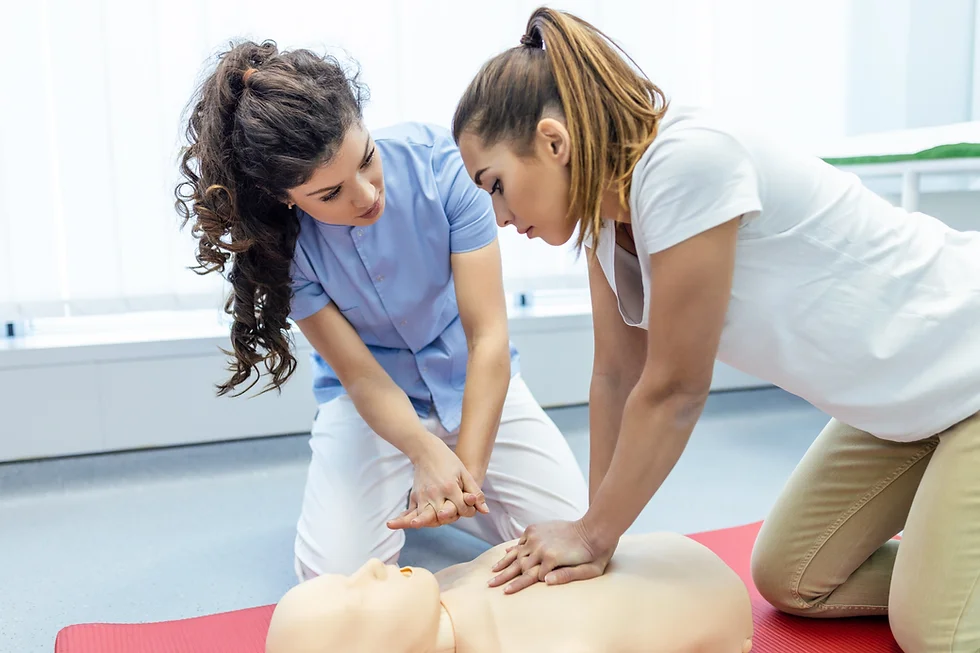In the face of cardiac emergencies, having the right skills to respond can make the difference between life and death. In places like Australia first aid and CPR provide invaluable knowledge and practical skills that can save lives.
Engaging in first aid and CPR training near me ensures you are prepared to act with confidence and effectiveness when every moment matters. Grasping the importance of first aid and CPR in cardiac emergencies is essential not only for medical professionals but for everyone. Timely intervention through these skills can drastically enhance survival rates and outcomes.
Cardiac Emergencies: The Silent Threat
Heart attacks and sudden cardiac arrest (SCA), which are examples of cardiac emergencies, are some of the primary causes of death around the globe. Specifically in Australia, over 20,000 individuals experience cardiac arrests outside of hospital environments annually. Regrettably, due to delayed immediate care, only a minor fraction of these people survive. Cardiac emergencies can happen unexpectedly, causing victims to faint within a matter of minutes. If not intervened promptly, victims can start to experience brain damage between 4-6 minutes, emphasizing the importance of a swift and effective response.
Sudden Cardiac Arrest vs. Heart Attack
It is crucial to understand the difference between sudden cardiac arrest and a heart attack to properly gauge the severity of a cardiac emergency.
Sudden Cardiac Arrest (SCA): SCA is an electrical malfunction in the heart that causes it to stop beating unexpectedly. As a result, blood flow to the brain and other vital organs is halted, leading to immediate unconsciousness. If CPR and defibrillation are not administered promptly, death can occur within minutes.
Heart Attack: A heart attack, on the other hand, occurs when blood flow to a part of the heart is blocked due to a clot or plaque buildup in the coronary arteries. While a heart attack can lead to cardiac arrest, it is a circulation problem rather than an electrical one. Immediate medical attention is still crucial, but the window for intervention is often wider than with SCA.
Why First Aid and CPR Matter in Cardiac Emergencies
Surviving a cardiac emergency hinges on receiving immediate and suitable treatment. Cardiopulmonary resuscitation (CPR) is a critical technique that maintains blood circulation to the brain and heart until emergency medical services (EMS) arrive. Performing CPR, especially chest compressions, aids in circulating blood to essential organs, ensuring the body’s systems continue to work.
Furthermore, possessing knowledge of first aid equips individuals to evaluate the situation, administer immediate assistance, and take necessary action before professional aid arrives. Training in first aid and CPR instructs individuals on how to identify cardiac emergencies, comprehend the survival chain, and apply appropriate methods to sustain the life of the victim.
First Aid Training: The Foundation for Lifesaving Skills
The increasing availability of first aid courses makes it easier than ever to access life-saving training. These courses provide comprehensive knowledge of first aid techniques, including how to recognize cardiac emergencies, administer CPR, and use an AED. Practical hands-on sessions allow participants to practise these skills in a controlled environment, ensuring they feel confident and competent during a real emergency.First aid training is a great asset for anyone, no matter their age, to help in cardiac emergencies when there are no health professionals around
Training courses in first aid and CPR aim to provide individuals with the knowledge and skills necessary to handle various emergencies. When it comes to cardiac emergencies, participants are taught how to:
- Assess the Situation: Identify whether the person is in cardiac arrest by checking for responsiveness, normal breathing, and a pulse.
- Initiate CPR: Begin chest compressions and rescue breaths if necessary. The focus is on providing high-quality chest compressions at a rate of 100 to 120 per minute.
- Use an AED: Automated external defibrillators are widely available in public places. Courses teach individuals how to operate an AED correctly and safely.
- Work as a Team: In some emergencies, multiple people may be involved in providing care. Effective communication and teamwork are essential for a successful outcome.
- Provide Care Until Help Arrives: First aid training emphasizes the importance of staying with the victim, providing continuous care, and communicating with emergency services until medical professionals take over.
The Role of AEDs in Cardiac Emergencies
The AED is a crucial tool in cardiac emergencies. This portable device, designed for simplicity of use with voice-guided instructions, administers a regulated electric shock to the heart. Its primary function is to reinstate a normal heart rhythm in patients suffering from sudden cardiac arrest.
Quick access to an Automatic External Defibrillator (AED) can mean life or death for a cardiac arrest victim, especially for first aid responders. Research has indicated that if defibrillation is administered within 3-5 minutes of a collapse, the survival rate can potentially reach 70%.
Numerous first aid and CPR training courses now incorporate lessons on operating AEDs. It is vital for anyone who might face a cardiac emergency in a public area to understand how to find and use an AED.
The Impact of Bystander CPR in Cardiac Emergencies
CPR administered by a bystander is crucial during cardiac arrests that occur outside of a hospital. Regrettably, research shows that less than half of the individuals who experience cardiac arrests in non-hospital settings receive CPR from bystanders. This is frequently attributed to inadequate knowledge, training, or confidence in delivering the necessary care.
The goal of first aid and CPR training is to empower more individuals with the skills and self-assurance to take action in emergency situations. Actually, those who have been trained in CPR are more prone to react when an emergency occurs. Their involvement in such situations can help sustain crucial functions and provide precious time until professional medical aid arrives.
The likelihood of surviving a cardiac arrest diminishes by around 10% for each minute without CPR or defibrillation. Consequently, training more individuals in CPR could significantly improve public health and survival rates in cardiac emergencies.
Cardiac Emergencies in High-Risk Groups
Some groups are more prone to cardiac emergencies, including individuals with preexisting heart conditions, older adults, and those with a family history of heart disease. Timely access to individuals trained in first aid and CPR can be crucial in saving the lives of these high-risk populations.
Particularly in workplaces with employees who belong to high-risk categories, it is crucial to prioritize first aid and CPR training in my vicinity. The presence of trained staff on the premises guarantees a swift response to any cardiac emergency, whether the individual is an employee, customer, or visitor.
Conclusion
Responding to cardiac emergencies necessitates crucial skills in first aid and CPR. The ability to identify cardiac arrest, start CPR, and operate an AED can be the determining factor between survival and fatality. Given the unpredictability of cardiac emergencies, it is vital for individuals to equip themselves with knowledge through participating in first aid training courses.
The likelihood of survival for cardiac arrest victims will improve as more individuals acquire these crucial skills, resulting in enhanced health outcomes and preserved lives. Undertaking the task of obtaining first aid and CPR certification isn’t merely a beneficial personal skill; it’s a civic obligation that can contribute to the safety of your community.



